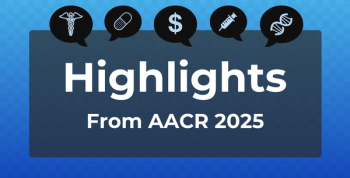
Secukinumab Significantly Improves Signs, Symptoms of Nonradiographic Axial Spondyloarthritis
Secukinumab 150 mg improves signs and symptoms of patients with nonradiographic axial spondyloarthritis, according to results of the PREVENT trial published in Arthritis & Rheumatology.
Secukinumab 150 mg improves signs and symptoms of patients with nonradiographic axial spondyloarthritis (nr-axSpA), according to results of the PREVENT trial
PREVENT is an ongoing phase 3 study evaluating the efficacy, safety, and tolerability of secukinumab 150 mg, with or without loading doses, to treat nr-axSpA. The randomized, double-blind, placebo-controlled 2-year study will have an extension of up to 2 years in patients with nr-axSpA.
The findings of PREVENT were presented at the European Congress of Rheumatology of the European League Against Rheumatism, and the results were used as a basis for
Patients were randomized 1:1:1 to receive secukinumab 150 mg with loading (150 mg LD), 150 mg without loading (150 mg NL), or placebo at baseline. The patients received doses during weeks 1, 2, and 3, and then every 4 weeks starting on week 4. Patients in the 150 mg NL group received placebo prior to week 4, while patients in the 150 mg LD group received secukinumab the entire time.
A total of 555 patients were randomized to the 3 groups, but 175 of 185 in the 150 mg LD group, 177 of 184 in the 150 mg NL group, and 175 of 186 in the placebo group actually completed 24 weeks of treatment. At week 52, 84.3% (156/185), 89.7% (165/184), and 86.0% (160/186) of patients in the 150 mg LD, 150 mg NL, and placebo groups, respectively, completed treatment. Among all the patients, 90.3% had not been treated by tumor necrosis factor (TNF) inhibitors.
The study met its primary end point. Improvement of at least 20% based on the Assessment in Ankylosing Spondylitis (ASAS20) response criteria in TNF inhibitor–naïve patients was significantly higher in the 150 mg LD group (41.5%) compared with placebo (29.2%; P = .0197) by week 16. By week 52, improvements were also significantly higher in the 150 mg NL group (39.8%) compared with placebo (19.9%; P < .0021).
The study also met its secondary end points as the secukinumab regimens showed significant improvement compared with placebo for Bath Ankylosing Spondylitis Disease Activity Index (BASDAI) score, and patients on secukinumab had significantly reduced sacroiliac edema score on MRI compared with placebo. Improvements in BASDAI score were seen as early as week 1 (–0.87 in the 150 mg LD group and –0.82 in 150 mg NL group vs –0.48 in placebo).
The mean duration of exposure was 564.8 days for the 150 mg LD group, 578.3 days for the 150 mg NL group, and 214.6 days for the placebo group. After week 20, inadequate responders were permitted to switch to open-label secukinumab 150 mg or standard of care.
Up to week 20, the overall incidence of treatment-emergent adverse events (AEs) was 61.2% for patients on secukinumab and 54.3% for patients on placebo. Most AEs were mild or moderate in severity across all treatment groups. Overall, secukinumab 150 mg (either the loading dose or the non–loading dose) was well tolerated, the authors noted, and there were no new or unexpected safety signals.
The findings from PREVENT, coupled with previous findings from the MEASURE trials evaluating secukinumab in patients with radiographic axSpA (r-axSpA), “demonstrate that secukinumab can be a viable option to treat the entire spectrum of axSpA i.e., from early to late stage or from nr-axSpA to r-axSpA,” the authors concluded.
Reference
Deodhar A, Blanco R, Dokoupilová E, et al. Secukinumab improves signs and symptoms of non-radiographic axial spondyloarthritis: primary results of a randomized controlled phase III study. Arthritis Rheumatol. Published online August 7, 2020. doi:10.1002/art.41477
Newsletter
Stay ahead of policy, cost, and value—subscribe to AJMC for expert insights at the intersection of clinical care and health economics.









































